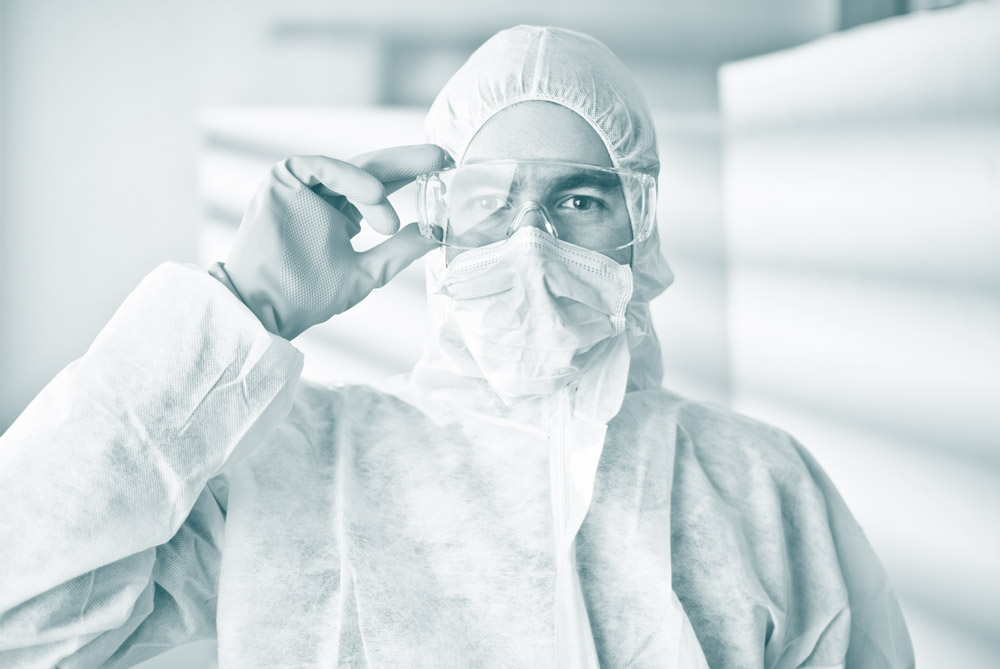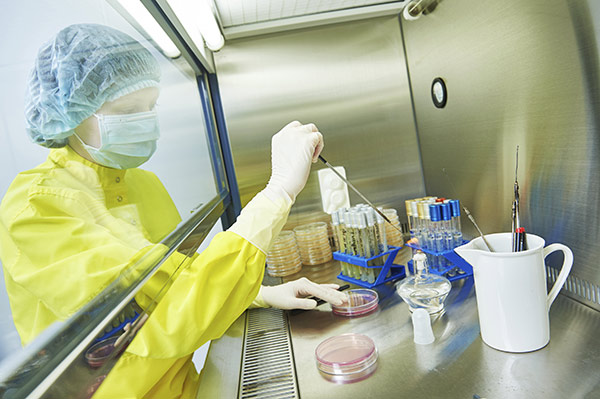Aseptic Cleaning, Cleaning & Disinfection, USP 797
Sterile Compounding – More Than Meets the Eye
Sterile compounding in a pharmacy involves customization of medication mixtures in a minimal contamination environment. Safeguarding against unwelcomed contamination is a tall order because many of the small contaminants are invisible to the eye and hidden as microorganisms. The robust standards established by the United States Pharmacopeia (USP) Chapter <797> for cleaning and disinfecting the sterile compounding environment upholds a high degree of patient safety.
Challenge of Compliance to USP Chapter <797>
Despite the standards established by USP Chapter <797>, the compliance rate is suboptimal. CriticalPoint, LLC conducted a survey in 2013 to assess the pharmacy compliance with the cleaning-related standards and disappointingly found only a 73% compliance rate. (1) This survey exposed gaps in the cleaning and disinfection practices of the sterile compounding environment and warrants solutions to aid practitioners.
Definition
Cleaning is the removal of organic or inorganic foreign materials in an environment. Disinfection involves the utilization of an antimicrobial agent used on an inanimate surface and is usually performed after cleaning. (2)
Cleaning and Disinfection
USP Chapter <797> recommends daily cleaning and disinfection for counters, horizontal work surfaces, and floors in ISO Class 5, 7, and 8 environments. For pharmacies with non-24 hours of operations, cleaning is recommended at the end of a compounding day. After cleaning these surfaces, some cleaning detergents may leave a residue that must be removed with sterile 70% isopropyl alcohol (IPA) and non-shedding disposable sterile wipes. The use of 70% IPA is relatively inexpensive, fast-acting, and has a rapid drying time. It is effective against vegetative microorganisms but limited against viruses. The Berkshire pre-wetted 70% IPA wipers SatPax® 670-R and Sterile SatPax® 670 is a cost-effective solution. Proper sanitization with the 70% IPA wipes requires a contact time of 10 to 30 seconds with the surface. (2)
USP Chapter <797> recommends monthly cleaning and disinfection of walls, ceilings, and storage shelves. (2) Management of these areas can be comfortably and reliably cleaned and disinfected using a variety of products, such as dry wipers (Durx® 670 or ValuClean® Plus) or the aforementioned pre-wetted wipers (SatPax® 670-R). Floors in the ante-area are to be cleaned once daily when no aseptic admixtures are in preparations. (3) The BCR® Floor Mop System is an easy-to-use solution to meet your most demanding needs.
Establishing Standards of Practice
Berkshire offers a variety of surface technology solutions to aid you and your sterile compounding pharmacy in complying with USP Chapter <797>. It is prudent to utilize these products in the context of established standards of practice, judicious policies, vigilant quality assurance monitoring, and ensuring practitioners are adequately trained to uphold the highest quality of patient safety.
References:
(1) Douglass K, Kastango E. Requirements and best practices for sanitizing engineering controls. Pharm Purch Prod 2013; 10(9): 16–22.
(2) Kastango ES, Douglass K, Patel K, Givehchi B, Brister P, Postlewaite J, Taraban L. SAFER STERILE COMPOUNDING: Choosing and Using Disinfectants for the Cleanroom. Int J Pharm Compd. 2015;19(4):268-78.
(3) Allen LV Jr, Okeke CC. Basics of Compounding: Considerations for Implementing United States Pharmacopeia Chapter <797> Pharmaceutical Compounding–Sterile Preparations, Part 4: Considerations in Selection and Use of Disinfectants and Antiseptics. Int J Pharm Compd. 2007;11(6):492-9.





















HAVE AN IDEA FOR CONTENT?
We are always looking for ideas and topics to write about.
Contact Us